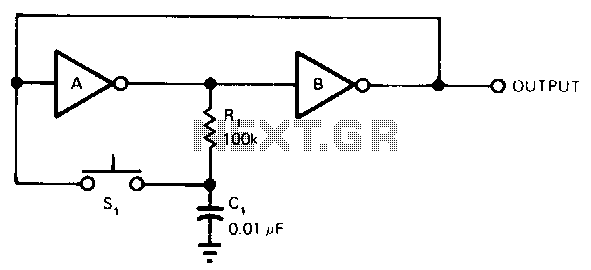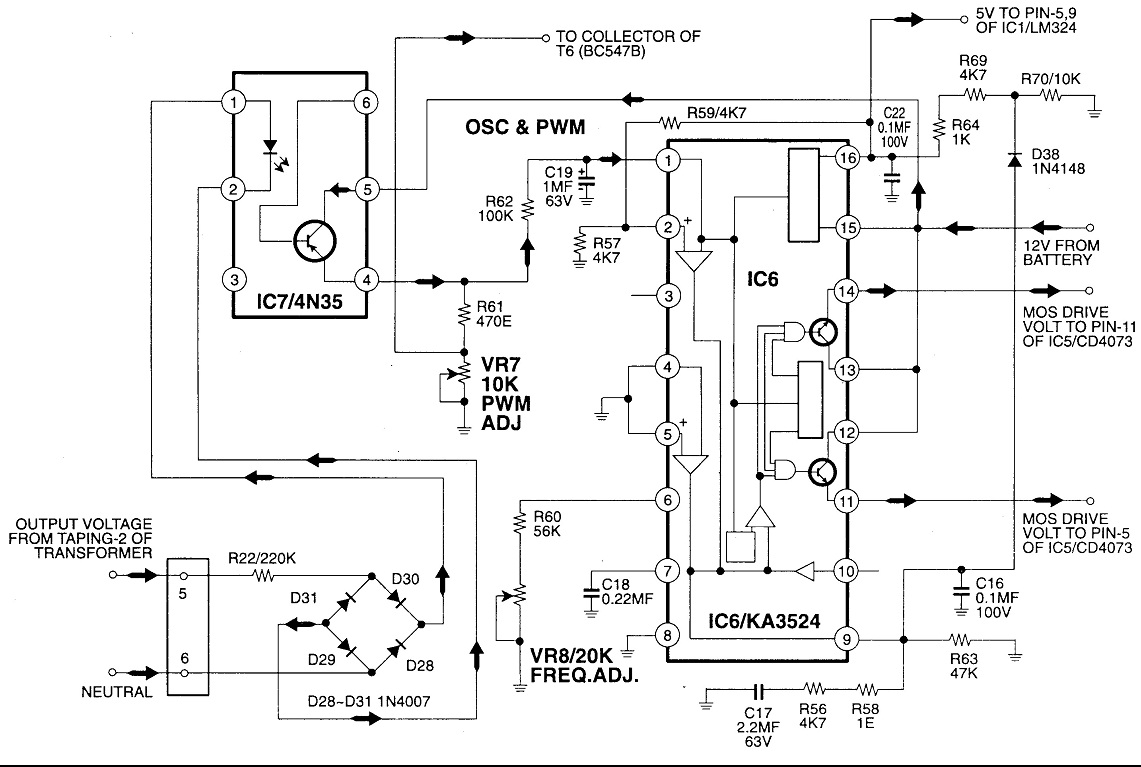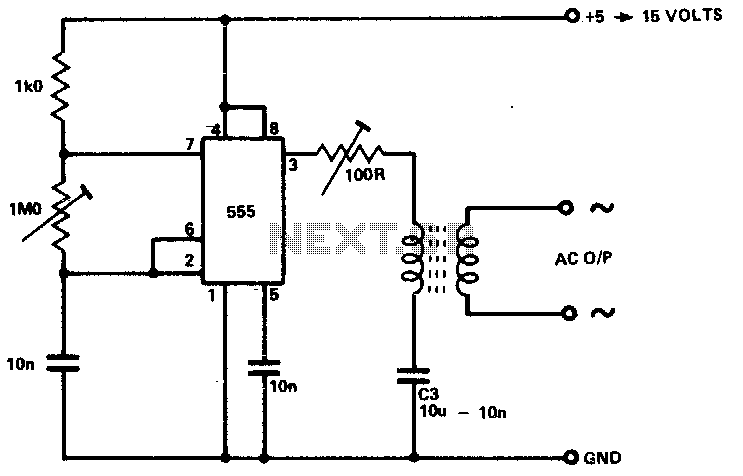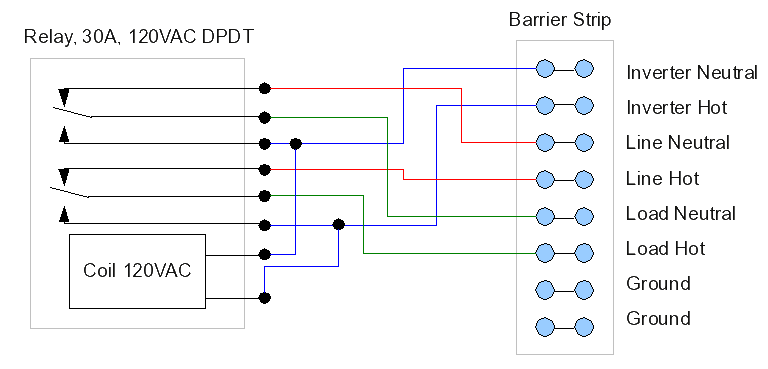
3000 Watt Inverter
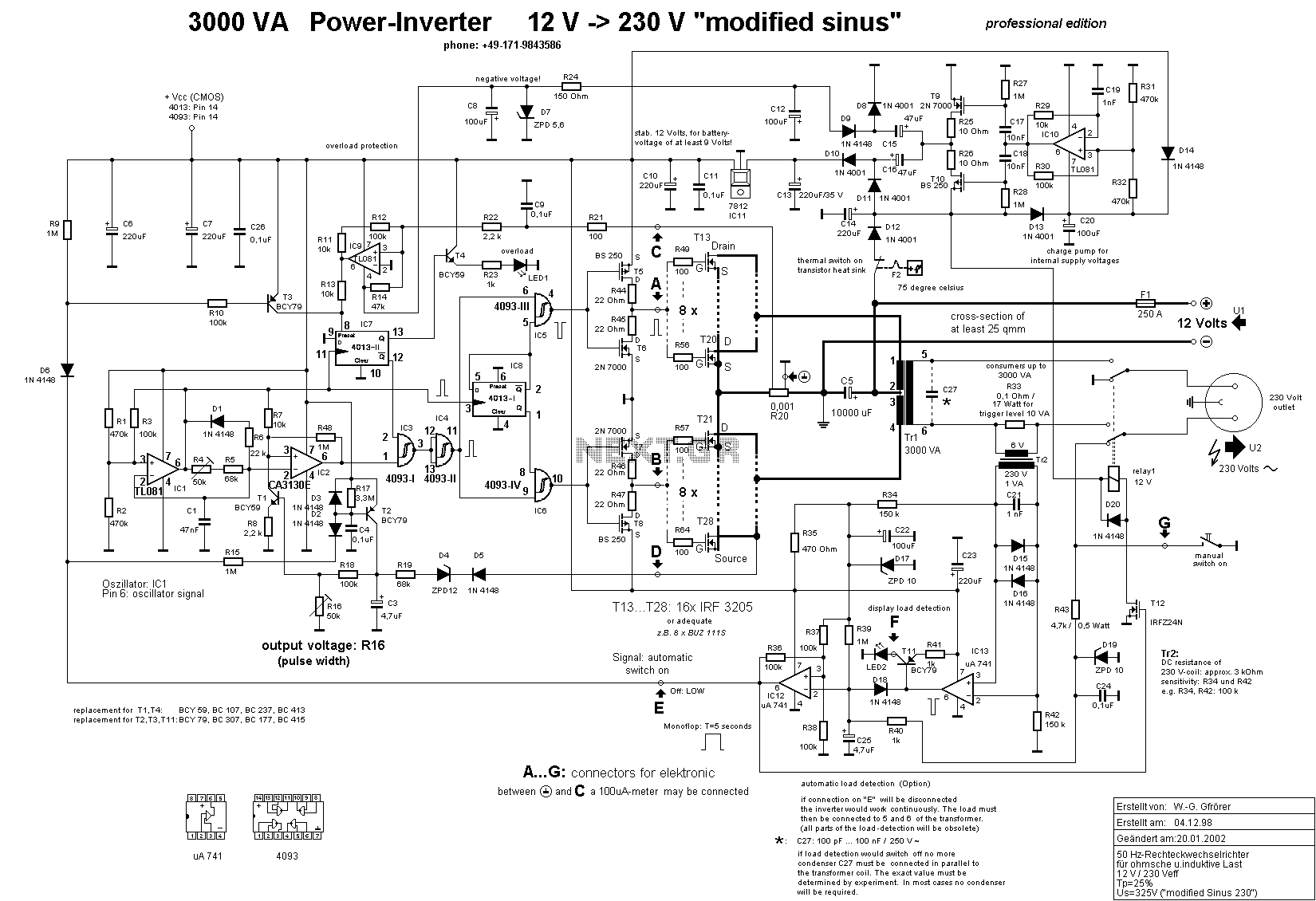
This is a high-power inverter circuit designed to deliver an AC power output of 3000W. It converts 12 Volt DC battery voltage into a square wave voltage with a frequency of 50 Hz and a duty cycle of 25%.
The inverter circuit operates by utilizing a combination of power transistors or MOSFETs to switch the DC voltage on and off, generating a square wave output. The circuit typically includes a transformer to step up the voltage to the desired AC level. The square wave output is characterized by its abrupt transitions between high and low states, resulting in a duty cycle of 25%, meaning that the output is high for 25% of the time and low for 75%.
Key components of this inverter include an oscillator circuit, which generates the necessary switching signals for the transistors, and a driver circuit that amplifies these signals to drive the power transistors. The output stage may also incorporate protective features such as fuses or circuit breakers to safeguard against overload conditions.
The inverter's design must account for thermal management, as the high power output can lead to significant heat generation. Adequate heat sinks or cooling fans are often employed to maintain operational efficiency and prevent component failure.
In applications, this inverter can be used to power various devices that require AC input, making it suitable for use in off-grid power systems, emergency backup supplies, and various industrial applications. It is essential to ensure that the inverter is properly rated for the intended load and that all safety standards are met during installation and operation.This is a very-very high power Inverter circuit which will give you very high AC power output 3000W. This inverter will convert 12 Volt DC Battery voltage into a square wave voltage of 50 cycles per second and duty cycle of 25% 🔗 External reference
The inverter circuit operates by utilizing a combination of power transistors or MOSFETs to switch the DC voltage on and off, generating a square wave output. The circuit typically includes a transformer to step up the voltage to the desired AC level. The square wave output is characterized by its abrupt transitions between high and low states, resulting in a duty cycle of 25%, meaning that the output is high for 25% of the time and low for 75%.
Key components of this inverter include an oscillator circuit, which generates the necessary switching signals for the transistors, and a driver circuit that amplifies these signals to drive the power transistors. The output stage may also incorporate protective features such as fuses or circuit breakers to safeguard against overload conditions.
The inverter's design must account for thermal management, as the high power output can lead to significant heat generation. Adequate heat sinks or cooling fans are often employed to maintain operational efficiency and prevent component failure.
In applications, this inverter can be used to power various devices that require AC input, making it suitable for use in off-grid power systems, emergency backup supplies, and various industrial applications. It is essential to ensure that the inverter is properly rated for the intended load and that all safety standards are met during installation and operation.This is a very-very high power Inverter circuit which will give you very high AC power output 3000W. This inverter will convert 12 Volt DC Battery voltage into a square wave voltage of 50 cycles per second and duty cycle of 25% 🔗 External reference

